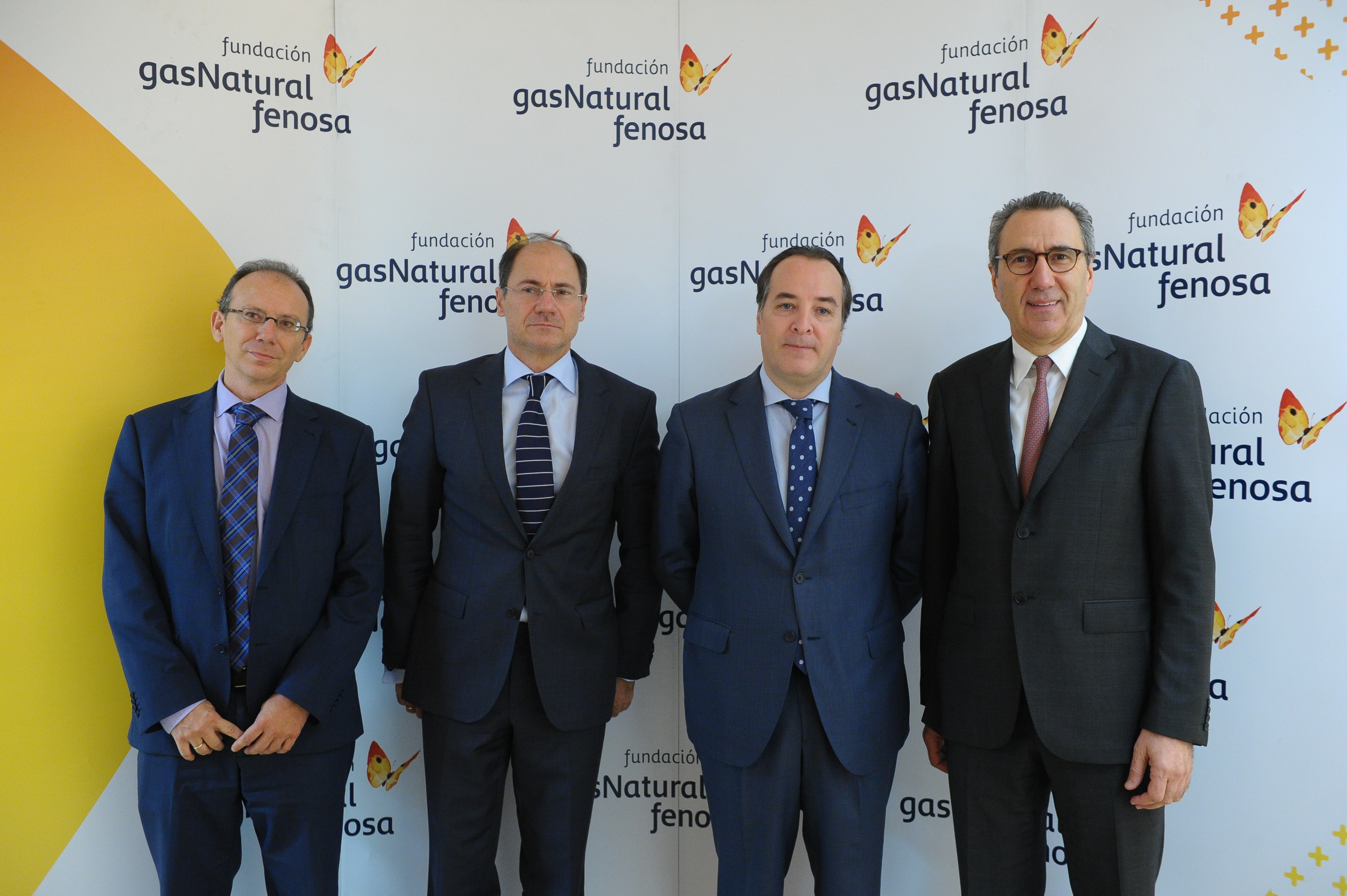Spain has the potential to generate 20,000 GWh of biogas energy per year, approximately 6.5% of total gas consumption in the country
At a seminar organised today in Madrid by the Gas Natural Fenosa Foundation and the Environment, Local Administration and Land Use Planning Council of the Region of Madrid, various experts highlighted the potential of biogas for reducing energy dependency in our country.
The Valdemingómez Technology Park (Madrid) avoids the emission of over one million tonnes of CO2 per year and produces enough electricity to cover its own energy needs and supply approximately 60,000 homes.

Earlier today, the Councillor for Environmental Affairs, Local Administration and Land Use Planning of the Region of Madrid, Jaime González Taboada, and the Managing Director of the Gas Natural Fenosa Foundation, Martí Solà, officially opened the seminar in Madrid entitled ‘Biogas: challenges and opportunities’. The event highlighted the important role that biogas could play in reducing energy dependency in the country and helping to achieve the environmental objectives of the European Union.
During the conference attended by over 150 professionals, information was provided on how this gas is obtained and practical cases were explained on how biogas from landfills and wastewater treatment plants in the Region of Madrid can be harnessed.
Biogas Project Manager at GAS NATURAL FENOSA Engineering María Piedad Martínez presented the operating principles and the advantages and disadvantages of the technologies available to produce biomethane from biogas and solid biomass. María Piedad Martínez stressed that Spain is the seventh-largest European producer of biogas and that, according to data from the Energy Diversification and Saving Institute (IDAE), the country has an available energy potential of close to 20,000 GWh (1,700 KTOE) per year, representing approximately 6.5% of Spain’s natural gas consumption.
She also said that the injection of biomethane into the natural gas network opens up the possibility to distribute and consume a locally produced gas, thereby reducing energy dependency on overseas sources. For this to happen, a regulatory framework must exist establishing the rules for each one of the various stakeholders involved, as well as an economic regime to promote implementation.
The Head of the Promotion and Information Department of the Valdemingómez Technology Park (Madrid), José Luis Cifuentes, presented the park’s biomethanisation facility, which is considered a benchmark in Europe and injected biomethane into the network equal to 67,076 Mwht of energy during last year alone. The energy management process at the Technology Park avoids the emission of over one million tonnes of CO2 per year and produces enough electricity to cover its own energy needs and supply approximately 60,000 homes.
Practical examples of biogas use
Grupo HERA Energy Director, Miquel Torrente, explained the advantages of and how biogas enrichment technology works via chemical absorption through amines, developed by HERA, and described the degree of implementation of the enrichment processes and biogas upgrading in the European Union.
Miquel Torrente presented the Hera Góngora project, the result of an agreement between GAS NATURAL FENOSA, Hera and Sodena which aims to analyse the viability of biogas from the Góngora landfill (Navarre) to be injected into the natural gas network or used as fuel for vehicles. This landfill generates more than 11 million cubic metres of biogas annually, containing 65 GWh of power, or enough to supply more than 6,000 families or 7,000 gas vehicles each year.
The Deputy Director for Treatment and Environmental Affairs of Canal de Isabel II, Miguel Ángel Gálvez, reviewed the first biogas projects at treatment plants in Madrid, their current status and future regulatory, productive and economic challenges. Miguel Ángel Gálvez said that the biogas produced at certain treatment plants allows 60% of electricity demand and 100% of thermal demand from their processes to be covered.
Meanwhile, the Director of the Biomass Department at the National Centre for Renewable Energies (CENER), Javier Gil, explained the main motivations behind developing biomethane produced from synthesis gas and analysed production costs and potential product value. Simulations and previous studies show that production costs would range between 40-70 €/MWh, less than the international price of biodiesel (83 €/MWh) and of bioethanol (85 €/MWh).
Finally, Joan R. Gibert, Chairman of the Board of Directors of the company Ingeniería Analítica, S.L, described the current instrumental analytical techniques used in the identification and quantification of the molecules that make up biogas, highly necessary for measuring and controlling the analysis of this new source of energy.
The Gas Natural Fenosa Foundation
The Gas Natural Fenosa Foundation, founded in 1992, targets its activity at the promotion of information, training and increased social awareness on improving energy efficiency and technological innovation in the field of energy while respecting and protecting the environment, and promotes cultural activities through the Gas Museum aimed at preserving and spreading knowledge about the historical and cultural heritage of the sector. It also has a programme to support exports for small and medium-sized enterprises. Its international activities are carried out in Algeria, Argentina, Brazil, Colombia, Costa Rica, Mexico, Morocco, Italy, Moldova and South Africa.
Madrid (Spain), 29 Oct 2015
Share